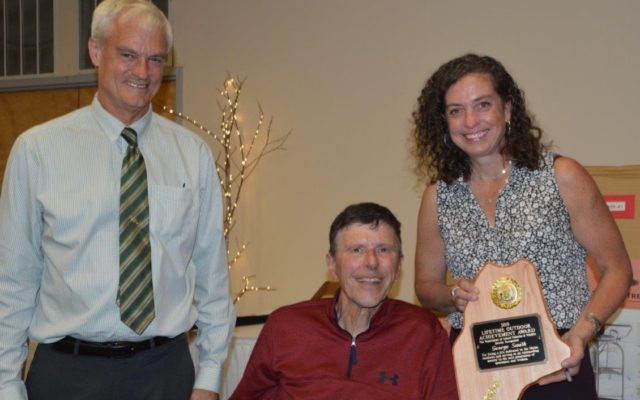
George Smith picked up birding binoculars late in life and bridged a divide
By Bob Duchesne
George Smith passed away last week. George was a longtime advocate for hunting and fishing. His obituary, and the accolades that have poured in, filled pages with his accomplishments, and lauded his outstanding personal qualities. He was probably best known for serving as the executive director of the Sportsman’s Alliance of Maine for 18 years. He was probably least known as a birder, but he was.
For those of us who care about birds, George’s story reveals a truism: We have all come to birds in our own unique ways. I was 6 when I embraced birding. George was 60. Some of us are early. Some of us are late. Some of us are better-late-than-never. At some time in our lives, something sparked us.
To be fair, George probably got interested before he realized it. That’s true of many people. Like most hunters, George had keen powers of observation. When such a person spends a lot of time in a tree stand, they notice the other critters in the woods. As George related to me several times, he’d be sitting still, blending into the background, and the warblers would start moving around him. Only, in his quintessential Yankee accent, he called them “wobblers.”
It was 2005. I was in the first of my six terms in the Maine legislature. Since I had an obvious interest in wildlife, it was inevitable that George Smith and I would interact. And did we ever! One spring morning, I met George and his wife, Linda, at their house in Mt. Vernon. We walked his property and the neighborhood road as I showed him all the wobblers that were living there. He was astounded, and mad at himself. All these great birds had been living next to him for all these years and he didn’t even know they were there!
George was hooked. He bought binoculars and a spotting scope – probably the first scope he ever owned that didn’t have crosshairs. I started running into him everywhere, especially in Baxter State Park, where he had nearby property, and on the South Lubec Sand Flats, where he had deep family roots. I doubt many people in the traditional outdoor sporting community can picture George Smith looking for shorebirds on a mudflat, but there he was.
George loved to travel. In his younger days, if the travel involved birds, it was probably to hunt pheasants in South Dakota. In his later life, he traveled to watch them, taking trips to Arizona, Costa Rica and Europe. Just last month, he teased me that he had seen a hoopoe, and I still hadn’t. A hoopoe is an Old World ground-feeder, related to kingfishers, with an outrageously ornate crest. I’ve always wanted to see one, which George knew, and he never missed a chance to rub it in.
Even before he developed a sudden passion for birds, George’s appreciation for nature led him to realizations that benefited all wildlife in the state. Although much of his career was spent lobbying on game issues, he recognized that nongame species were part of a healthy ecosystem that served everybody. The entire food chain was important. I was truly surprised when this conservative hook-and-bullet Republican came into the Natural Resources Committee during my freshman year, hand-in-hand with Maine Audubon, to advocate for protection of vernal pools. Later, George grew dismayed at how lead sinkers were killing loons and lead ammunition was killing eagles. One of his last unfulfilled missions was to ban rubber worms as bait, after seeing how much non-biodegradable waste was ending up on lake beds and killing fish.
It was a pleasure to sponsor some of George’s bills in the legislature. It was also a pleasure to kill most of them. I chaired the Inland Fisheries and Wildlife Committee for my last three years in Augusta. Whenever George testified, I reminded him that he was dead wrong half the time. He would grin, point at the committee, and exclaim, “And it’s your job to figure out which half!”
George collaborated with Maine Audubon multiple times over the years, starting with the popular Chickadee Checkoff that underwrites the state’s Endangered and Nongame Wildlife Fund. Later, Maine Audubon sponsored his popular Wildfire cable show. George figured out early that if the sporting communities and wildlife communities got together, there was no conservation goal they couldn’t achieve.
His passing is a tremendous loss to Maine’s birding community. Twenty years ago, nobody would have seen that coming.
Bob Duchesne serves as vice president of Maine Audubon’s Penobscot Valley Chapter. He developed the Maine Birding Trail, with information at mainebirdingtrail.com. He can be reached at duchesne@midmaine.com.